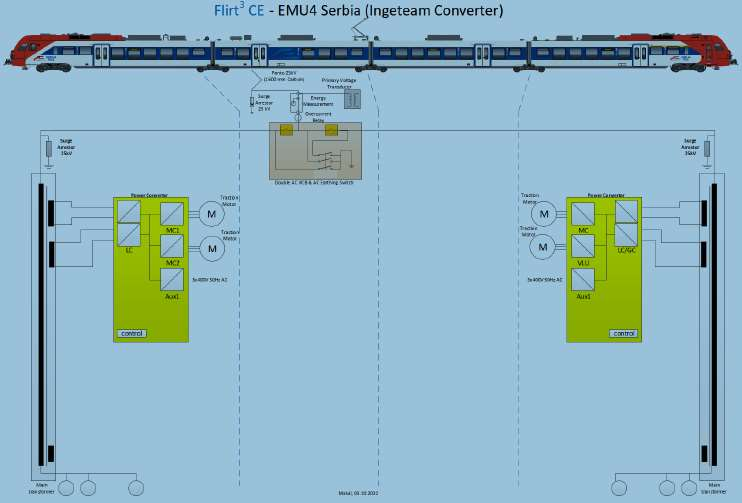Low carbon integrated vehicles and buildings
Abstract
This paper defines vehicles and buildings as main sources of United Kingdom (UK) carbon dioxide (CO2) and seeks to cut such emissions using green hydrogen made from combined wind and solar energy. Combustion vehicles powered by fossil petroleum emit near half of UK climate-warming CO2 while buildings heated by natural gas provide a third. First, current UK grid problems are defined: Electricity, gas and petroleum grids. Refueling green vehicles has been a particular problem. Then experiments on the private wire community of Keele University show how green hydrogen could integrate both green vehicles and buildings. Next, the model supply chain is planned and tested. Finally, experiments and calculations are outlined, analyzing the optimum system design criteria proposed. We conclude that economic green hydrogen can displace petroleum in vehicles, while powering buildings instead of natural gas. Also, the prospect in 2024 is that profits can be made all along the green hydrogen supply chain, such that new businesses involved in local private clean communities can cost less than the National Grid monopoly and other dominant fossil energy companies.
References
[1]Kendall K. Green Hydrogen in the UK: Progress and Prospects. Clean Technologies. 2022, 4(2): 345-355. doi: 10.3390/cleantechnol4020020
[2]Lobo RFM. A Brief on Nano-Based Hydrogen Energy Transition. Hydrogen. 2023, 4(3): 679-693. doi: 10.3390/hydrogen4030043
[3]Geschwindt S. EU set to make solar panels mandatory. Available online: https://buildindigital.com/ (accessed on 27 May 2022).
[4]Gill T. How many people have solar panels in the UK? Available online: https://www.theecoexperts.co.uk/solar-panels/popularity-of-solar-power (accessed on 28 January 2024).
[5]La Camera F. Renewable Power Generation Costs in 2020. IRENA; 2021. pp. 1–179.
[6]BEIS. UK energy in brief 2022. Available online: www.gov.uk/government/statistics/uk-energy-in-brief-2022 (accessed on 28 January 2024).
[7]Quinn B, Davies R. UK poised to drop plans to replace home gas boilers with hydrogen alternatives. Available online: https://www.theguardian.com/environment/2023/jul/13/uk-poised-to-drop-plans-for-hydrogen-to-replace-natural-gas-in-homes (accessed on 28 January 2024).
[8]BBC. Product life cycle. Available online: Product life cycle - Product - Higher Business management Revision - BBC Bitesize (accessed on 28 January 2024).
[9]Kendall K. Economic green hydrogen for UK refueling stations and buildings. Renewable and Sustainable Energy. Published online 2023. doi: 10.55092/rse20240001
[10]Jałowiec T, Grala D, Maśloch P, et al. Analysis of the Implementation of Functional Hydrogen Assumptions in Poland and Germany. Energies. 2022, 15(22): 8383. doi: 10.3390/en15228383
[11]Wulf C, Kaltschmitt M. Hydrogen Supply Chains for Mobility—Environmental and Economic Assessment. Sustainability. 2018, 10(6): 1699. doi: 10.3390/su10061699
[12]Fan Z, Cao J, Jamal T, et al. The role of ‘living laboratories’ in accelerating the energy system decarbonization. Energy Reports. 2022, 8: 11858-11864. doi: 10.1016/j.egyr.2022.09.046
[13]Bamisile O, Hatton L, Jansen M, Staffell I. Enabling the UK to Become the Saudi Arabia of Wind? The Cost of Green Hydrogen from Offshore Wind. Energy Futures Lab; 2023.
[14]Ostadi M, Paso KG, Rodriguez-Fabia S, et al. Process Integration of Green Hydrogen: Decarbonization of Chemical Industries. Energies. 2020, 13(18): 4859. doi: 10.3390/en13184859
[15]McCarty M. National grid studying UK hydrogen pipeline network potential. Available online: https://pgjonline.com/news/2021/may/national-grid-studying-uk-hydrogen-pipeline-network-potential (accessed on 28 January 2024).
[16]Pratley N. The next UK net zero battleground is electricity pylons. Available online: https://www.theguardian.com/business/nils-pratley-on-finance/2023/sep/26/the-next-uk-net-zero-battleground-is-electricity-pylons (accessed on 28 January 2024).
[17]National Grid. Substations, pylons and overhead lines. Available online: https://www.nationalgrid.com/electricity-transmission/who-we-are/running-our-network/substations-pylons-and-overhead-lines (accessed on 28 January 2024).
[18]Copes R, Barn P. Is living near power lines bad for your health? BC Medical J. 2008; 50(9): 494.
[19]Kendall K. Midlands green hydrogen: Climate emergency-action expo. Available online: https://www.hydrogenunited.org/event-details/midlands-green-hydrogen-2030-climate-emergency-action-expo (accessed on 28 January 2024).
[20]Majumder-Russell G, Rihoy C, Mitchell K. Hydrogen Law, Regulations and strategy in the UK. Available online: https://cms.law/en/int/expert-guides/cms-expert-guide-to-hydrogen/united-kingdom (accessed on 28 January 2024).
[21]Yusaf T, Laimon M, Alrefae W, et al. Hydrogen Energy Demand Growth Prediction and Assessment (2021–2050) Using a System Thinking and System Dynamics Approach. Applied Sciences. 2022, 12(2): 781. doi: 10.3390/app12020781
[22]Deilami S, Muyeen SM. An Insight into Practical Solutions for Electric Vehicle Charging in Smart Grid. Energies. 2020, 13(7): 1545. doi: 10.3390/en13071545
[23]Guan D, Wang B, Zhang J, et al. Hydrogen society: from present to future. Energy & Environmental Science. 2023, 16(11): 4926-4943. doi: 10.1039/d3ee02695g
Copyright (c) 2024 Kevin Kendall

This work is licensed under a Creative Commons Attribution 4.0 International License.





.png)


